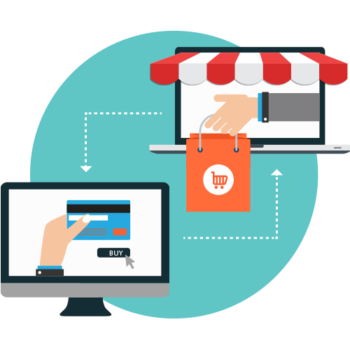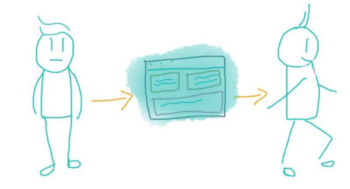
ecommerce is a highly competitive industry in today’s market, so it’s more important than ever to make the most out of your website. Your online platform is your key to revenue so creating a responsive and receptive site is imperative.

So how do you make sure that your website is successfully converting leads into customers?
1)Keep it simple
Consumers today have extremely short attention spans. Don’t overwhelm them with too much information. Make sure your website is simple yet effective. It should be easy to navigate and customers should be able to easily access what they want.
Including a search option at the top of the site is extremely useful as customers can then search for the specific item that they want using keywords and key phrases.
A simple list of categories or departments at the top of the site is also useful so that customers can navigate the site quickly and effortlessly.
2) Website speed optimization
According to some research, 53% of visitors will abandon a mobile page if it takes longer than 3 seconds to load. Making sure your website loads quickly is therefore extremely important.
This doesn’t just apply to ecommerce websites. Let’s say you have a local shop that serves coffee for sydney people or you are running a child learning centre in dural, having a quick-loading website is key to converting potential customers. Don’t lose customers over something as simple and as stupid as a slow-loading page.
3) Product categories
Make things easy for your customers by breaking products into easily defined categories. Don’t be afraid to list a specific product under multiple categories. The idea behind breaking everything down into categories is to make it easy for customers to find what they’re looking for. Whilst one person may look for a handbag under “womenswear”, another might search for it under “accessories”. Have it listed under both and ensure all your potential customers can find what they’re looking for.
4) Product descriptions
Product descriptions should be clear and concise yet detailed enough to give customers all the information they need. To write a good product description, think about things from the customer’s perspective. What details do they need to know before making a purchase? Remember that your customers will most likely have dozens or hundreds of other options at their fingertips, so make the decision to pick your product easy for them by providing an engaging, persuasive and helpful description.
Your product descriptions are also a fantastic Search Engine Optimisation tool. Make sure your descriptions include all relevant keywords so that your products and site are ranked highly on search engines and become increasingly visible to your customers. This will not only make sure that people can find your products, but it will also drive users to your website and help generate new customers.
5) Image analytics

AI-powered image analytics are becoming increasingly used in retail and is particularly useful in the fashion retail industry. By processing image characteristics, AI-powered image analytics helps increase sales. For example, if someone is browsing an online magazine or a particular social media channel and sees a celebrity or influencer wearing an outfit or item of clothing that they like, AI can pick up on this and process the characteristics of the image to suggest similar items available on your website. This allows you to follow up and target this user with adverts displaying similar products. It, therefore, generates leads and drives new customers to your websites
It can also be used within your own website too. For example, if a user is looking at a particular item that happens to be out of stock, AI-powered Image Analytics can process the qualities of that item and suggest a similar product in your catalogue. This allows you to retain your customers and make a sale rather than losing them to another vendor.
6) Simple check-out process
Cart-abandonment is one of the major issues facing the ecommerce industry. You shouldn’t be losing a customer at the final stage of the sales cycle. They’ve already expressed an interest in your product, they’ve already made the decision to purchase said product and have committed to filling out the check-out form or application form. If they are subsequently abandoning the check-out process, there is most likely a problem with your site.
Making sure your check-out or application process is as straightforward as possible is key to converting customers and making that final sale. Keep the required fields to a minimum and only ask for vital information. Make the process as easy as possible for your customers to ensure they make that final purchase.
7) Keep an eye on bounce rates

To keep your website as relevant and as functional as possible, you should keep an eye on how users are engaging with it. Your bounce rate is a key piece of data that shows you how many users arrive at your site only to leave a few seconds later. If your bounce rate is high, you need to improve your website by either improving website speed, making it easier to navigate or rearranging the display and content.
8) Put customers first
Everything you put on your site should be with your customers in mind. When designing or overhauling your website, think about what your customers are looking for when they arrive at your site. Make the site as easy to navigate as possible and write all product descriptions with your customers’ needs and thought processes in mind.
The key to converting as many customers as possible and increasing your revenue is by making it as easy as possible for consumers to engage with your website. Taking time to see things from their perspective and adjusting your processes to accommodate them is therefore imperative.

